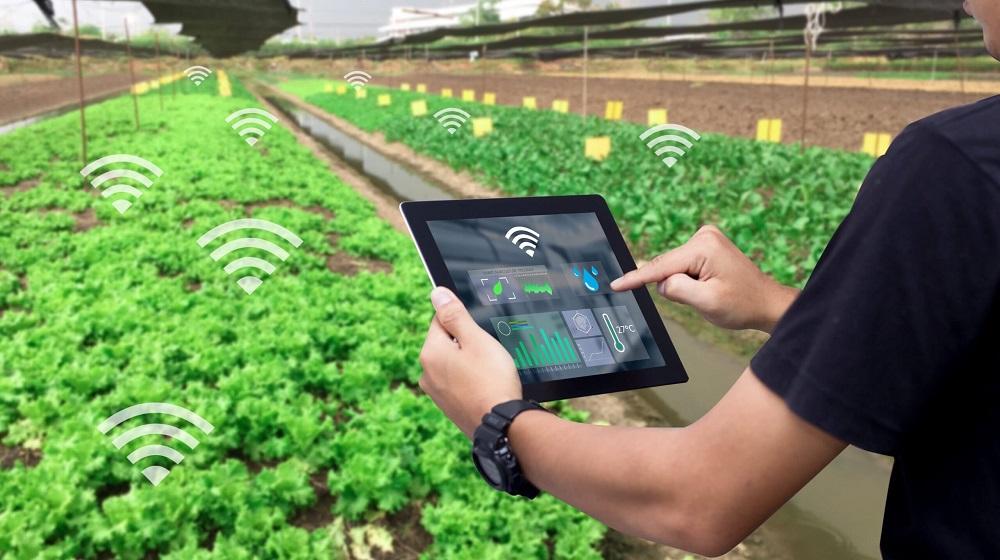Agriculture has long been a backbone of economies across the globe, however traditional farming practices are increasingly coming under pressure due to factors like rapidly growing populations, climate change impacts and shortage of farm labor. This is why smart agricultural techniques leveraging cutting edge technologies are gaining prominence as they help boost productivity and sustainability of the farm sector. Let's explore some of the key smart agriculture solutions making waves.
Precision Farming for Higher Yields
Precision farming relies on technologies such as GPS, GIS, sensors and automated equipment to precisely analyze fields and apply optimal amounts of seeds, water, fertilizers and pesticides only where required. Precision farming helps save on agricultural inputs while increasing yields. For example, GPS-enabled tractors and seed drills can automate seeding and ensure uniform plant spacing for optimal growth. Similarly, moisture sensors in soil communicate wirelessly about soil conditions and automatically control smart irrigation systems for watering crops only as per their needs. Precision farming techniques have shown to increase crop yields significantly with proper implementation.
Automation for Labor Shortage Mitigation
Global agriculture faces shortage of farm workers to carry out labor-intensive tasks manually. This is where automation comes to the rescue through robotics, autonomous equipment, artificial intelligence and machine vision. Agricultural robots can now carry out tasks like planting, weeding, Pruning, spraying, fertilizing, harvesting etc. Autonomous tractors integrated with GPS and computer vision can plow, seed and perform other farm operations unmanned. Drones equipped with cameras and sensors map fields, monitor crop health and enable targeted applications. AI and computer vision enable automated sorting, grading and packing of harvested produce. Such mechanization and automation helps overcome labor constraints and improve productivity.
IoT and Cloud for Remote Monitoring
Internet of Things (IoT) devices are playing a vital role in digitizing farms and enabling remote monitoring of fields and livestock. Sensors integrated with gateways and satellites capture real-time data on parameters like soil moisture, temperature, humidity levels, levels of nutrients and diseases in crops or health issues in cattle. This granular data transmitted wirelessly to the cloud helps farmers gain actionable insights on their mobile apps or desktops. Experts can also access this data to provide personalized recommendations. Livestock tracking devices keep a tab on animal movements and behaviors. IoT and cloud computing are thus empowering farms with always-on digital connectivity.
Big Data Analytics for Decision Making
The huge volumes of data collected from fields through IoT devices, drones, sensors and automated equipment undergo analysis via machine learning and predictive modeling techniques. This helps draw patterns from past yields, costs incurred and impacts of different farming practices. Big data analytics facilitates scientifically backed decision making around suitable crops, optimized sowing windows, irrigation schedules, fertilizers required, pest/disease management practices best suitable considering local soil and weather conditions. Predictive alerts on impending risks like droughts or pest attacks enable timely contingency planning and cost savings. Data-driven decision support is thus a backbone of precision smart agriculture.
Blockchain for Supply Chain Transparency
Blockchain, the distributed digital ledger technology, Smart Agriculture Solutions s finding increasing adoption in agriculture for enabling traceability and transparency in supply chains. Smart contracts embedded in blockchain capture key attributes like origin, testing/certifications received, transportation details etc. at each stage as produce changes hands – from farm to processor to distributor to supermarket to consumer. This end-to-end tracking helps address issues like counterfeits, boost consumer safety and confidence. Blockchain supported platforms also directly connect farmers with buyers, eliminating middlemen costs for both. Overall, it fosters sustainability, trust and efficiency in agricultural supply chains globally.
Genetic Enhancements and Biotechnology
Advances in biotechnology, gene sequencing and genetic engineering are revolutionizing agriculture. Traditional plant and animal breeding is giving way to gene editing techniques like CRISPR which enhances desired traits more precisely and in shorter durations. Drought/disease resistant varieties requiring less water and yielding higher even in adverse conditions are already in the works. Advances like climate-resilient seeds, early maturing hybrids, biofortified crops rich in essential micronutrients address global food security challenges. Livestock cloning and improvement in quality/quantity of milk yields from cows and generation of low cholesterol eggs from chickens are contributions of biotech to nutrition worldwide. While regulations are put in place, biotech does hold the promising potential to feed the increasing global population sustainably.
Challenges and Way Forward
While transformative, wide adoption of smart agriculture also faces certain barriers like high initial infrastructure costs, lack of awareness among many smallholder farmers, data security and privacy risks. Standardization of IoT protocols, affordable multifunctional farm equipment and capacity building are required to democratize the benefits of tech for all. Public-private partnerships must promote smart farming tailored for different regions and crops. Cloud-based pay-per-use models could reduce costs. Overall, convergence of technology streams holds the key to more resilient, productive and environmentally sustainable agriculture of the future as ‘Farming 4.0’ evolves. With supportive policies and collective will, smart agriculture does seem poised to help nourish billions worldwide in times to come.
In conclusion, as populations boom and climate volatility rises, smart farming leveraging diverse technological solutions provides a way for the agriculture industry to evolve towards increased yields from the same land area more efficiently. While challenges persist, focused efforts to make these advanced techniques accessible even to smallholder farmers would go a long way in realizing inclusive and sustainable development of the agriculture sector globally to ensure food and nutrition security for one and all.
For more Insights, Read –
https://www.insightprobing.com/smart-agriculture-solutions-size-and-share-analysis/
